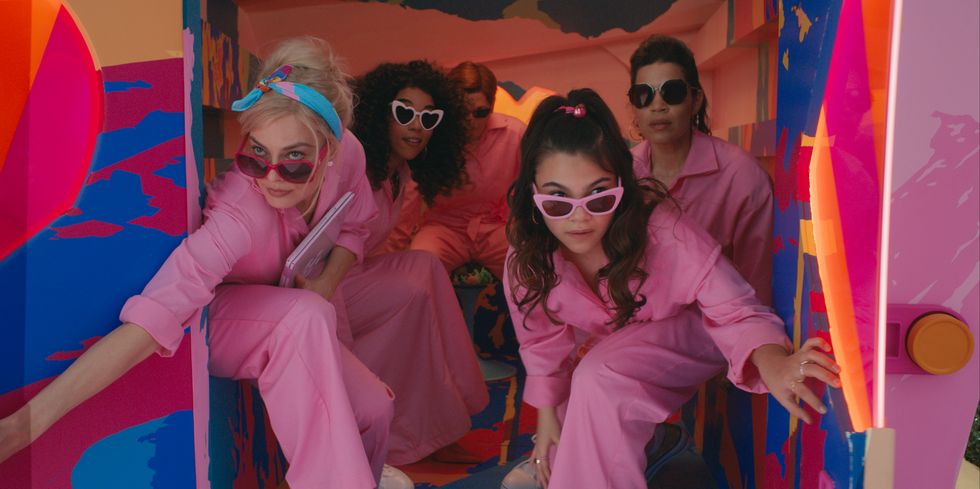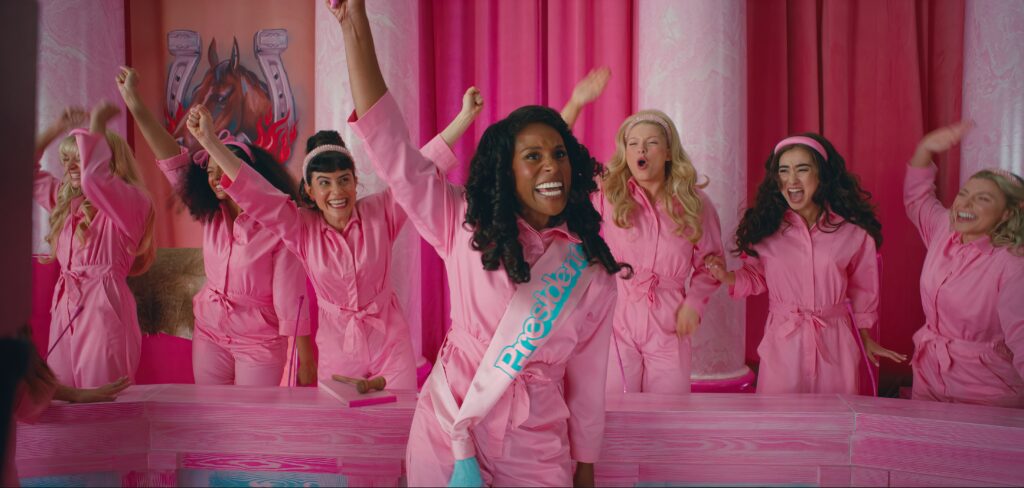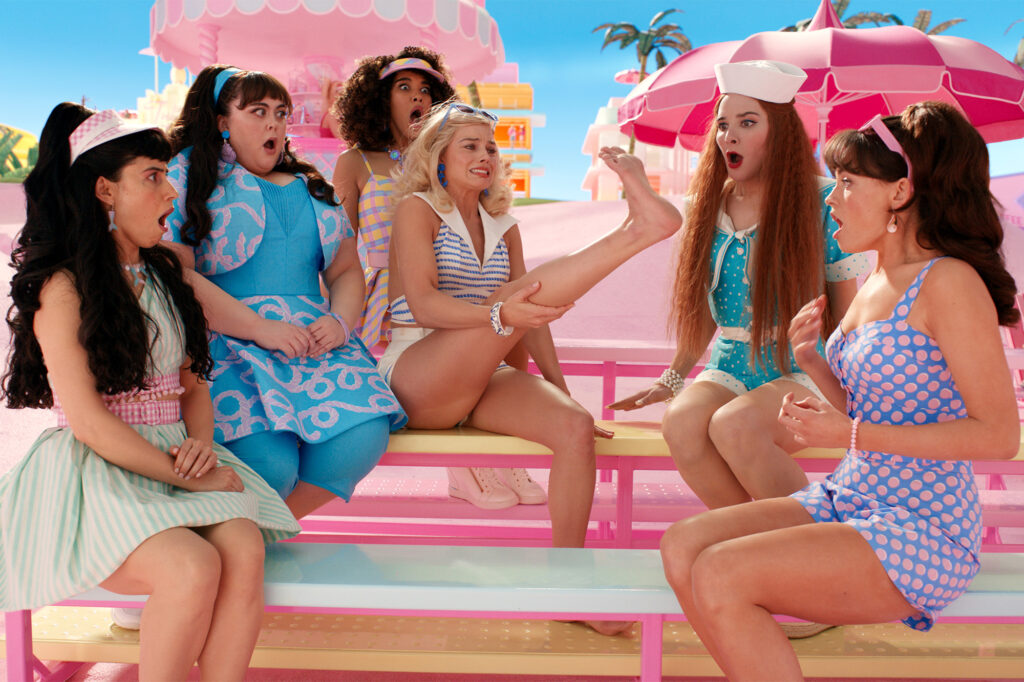In the second half of Barbie, there’s a 3-minute speech by Gloria (played by America Ferrera) where she highlights harsh facts about the plight of women all over the world – whether it’s at the workplace, at home, as a mother, as a married or unmarried woman, or even her health and beauty standards.
This speech should’ve / could’ve been the focal point of the film . However, it keeps losing the plot each time it reaches a highpoint and leaves the viewers confused of its purpose.

Source: Warner Bros.Greta Gerwig’s Barbie opens on a fun note, introducing the origins of the American toy as seen in the first teaser of the film, followed by the perfect world called “Barbieland”.
It’s everything you can imagine – attractive women with perfect teeth, tiny frames, luscious hair and pointed toes. It’s a world run by women, for women; Men (or Kens) are second-class citizens and merely an accessory in this world. You guessed it – it’s the opposite of the real world.
All the Barbies wake up with a charming smile and fresh breath, wear cute colorful outfits, eat (or imagine eating) heart-shaped food, live in beautiful dream houses, greet each other every morning with love and affection, and spend their days chilling on the beach.

Source: Warner Bros.It’s genuinely thrilling to get immersed in this world fused with nostalgia and explore your child-like imagination. There are also some light-hearted giggles and puns along the way to keep you entertained.
Not just Margot Robbie as the leading Barbie and Ryan Gosling as the leading Ken, but all the other Barbies and Kens, and even Allan (who’s supposedly Ken’s best friend) played by Michael Cera, flawlessly convince us of this perfect toy-land.
From playing volleyball on the pink hard sand to surfing on rock-solid beach waves and even pretend-driving a fancy convertible pink ride – Barbie does a terrific job of world-building with great production design and costumes.

Source: Warner Bros.However, it soon loses the plot when Barbie (Robbie) suddenly experiences emotional and physical signs of distress. Described as a “stereotypical” Barbie, she experiences existential crisis that are beyond her comprehension, leaving her no choice but to embark on a journey into the “human world” to discover her purpose.
Smitten by her, Ken (Gosling) joins her on the journey, only to learn about the “bliss” of patriarchy and find his purpose.
While Barbie is on a mission to find her identity and values through the human who “owns” her, Ken is determined to bring patriarchy to “Barbieland”.
What follows for the rest of the duration of the film is a hotch-potch of woke themes, talk of women empowering and feminism, equality, patriarchy, and self-worth.
If you’re confused by this premise – you’re not alone.

I watched Barbie at a press viewing which included an exciting pre-screening reception filled with photo ops such as surf boards, beach chairs, beach ball and even the Mattel Barbie box. It was an immersive experience with everyone dressed in pink, reliving their childhood.
However, as entertaining as the pre-party was, the film left no impact at all.
The makers of Barbie have been on a marketing and promotional frenzy, painting the world pink. However, the film’s story isn’t half as creative, bold, or even coherent.
Popcorn Rating – 

 [3/5]
[3/5]
Barbie feels like desperate attempt at making the brand relevant again (there’s a definite possibility of spikes in sales at Mattel) and crafting a story tapping into the Gen-Z and Gen Alpha market.
Sadly, Barbie the character and Barbie the film, both suffer from a severe case of identity crisis.